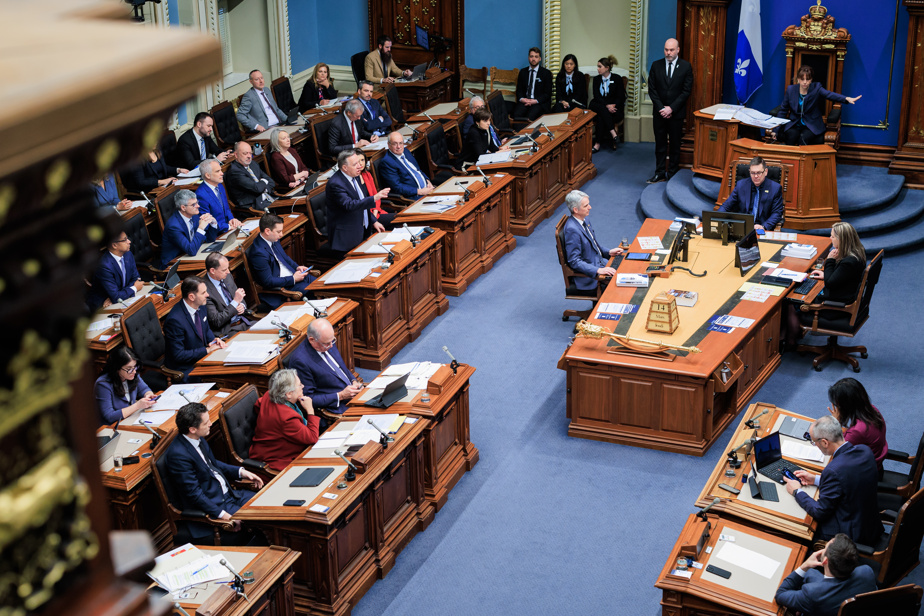(Quebec) Electoral redistribution has caused a lot of discussion in Quebec in recent months. The proposal from the Electoral Representation Commission (CRE) to remove two constituencies to add two new ones provoked a lot of resistance, so much so that all the parties represented in the National Assembly chose to postpone the reform of the electoral map in order to to modify the division criteria.
The Minister of Democratic Institutions, Jean-François Roberge, has not closed the door to increasing the number of seats in Quebec. But is this solution viable? The Canadian Press looked into the issue.
When it comes to increasing the number of seats in Quebec, the comparison with Ontario comes almost instantly. The neighboring province has one less elected official than Quebec for an electorate of a little less than double. In Ontario, there are an average of 86,616 voters per county, while in Quebec this average is 50,422. This comparison particularly annoys political scientist at Laval University Marc André Bodet.
“Today, Ontario is significantly below a global standard and that may not be a good comparison. […] We have to stop looking at Ontario! » he says in an interview.
You don’t have to look far to see that this comparison has its limits. Indeed, after Ontario, Quebec is the Canadian province with the most voters per constituency.
With 87 elected officials, British Columbia has an average of 40,515 voters per constituency. In Alberta, which has the same number of seats as its neighboring province, an elected representative represents on average 34,336 constituents.
Comparisons which make Marc André Bodet say that Quebec could increase its number of seats. He even mentions the figure of 150 elected officials. “We are not obliged to do that, but it gives us an idea of what would be acceptable to obtain significant gains both in terms of representation, reduction of distortion and to find a solution to the problem of large constituencies rural areas,” he explains.
According to the professor, increasing the number of seats is a rather simple option – unlike the establishment of a proportional vote – and which has several advantages: “Reducing distortion, increasing the representativeness of the Assembly, but also ensuring that the constituencies are not too large,” lists the professor.
He adds that smaller districts allow candidates with fewer resources to campaign while being more competitive. According to him, just five additional seats would already allow several interesting gains.
Québec solidaire (QS) raised the idea of increasing the number of seats in Quebec from 125 to 129. The Parti Québécois also thinks that more deputies are needed. The Liberal Party (PLQ) indicates, for its part, that it does not yet have a position on the subject.
“The problem is not so much the number”
Lecturer at the University of Quebec in Montreal (UQAM) André Lamoureux does not share his colleague’s opinion on the increase in seats. “The problem is not so much the number, but rather equity between the constituencies,” he maintains in an interview. He fears that adding seats will result in districts ending up with too few voters.
During the consultations, elected officials mentioned the fact that counties would become so large that they would have an area similar to certain countries. PQ MP Pascal Bérubé even mentioned the security risks of having to travel across such a large territory to meet his constituents.
An argument that André Lamoureux does not buy, who recalls that federal constituencies are already much larger.
We could have special arrangements. The National Assembly could provide more staff or a larger budget for travel.
André Lamoureux, lecturer in political science at UQAM
Increasing since 1867
One observation, however, is unequivocal: the number of voters per constituency in Quebec has increased considerably since 1867. Obviously, the electoral context was very different in the 19e century, particularly with regard to means of transport and communication.
According to figures from Élections Québec, on that date, the 65 Quebec elected officials represented an average of 2,487 voters. In 2022, Quebec now has 125 constituencies and they have an average of 50,422 voters. Thus, although the number of seats in Quebec has increased over the years, the proportion of voters per constituency has exploded.
Marc André Bodet believes that it is inevitable that we increase the number of elected officials in Quebec. “There are factors that could accelerate this change, such as a series of highly distorted elections,” he says.
Current law provides that Quebec can have between 122 and 125 constituencies. The Electoral Representation Commission determines the boundaries of constituencies based on “demographic, geographical and sociological considerations, such as population density, relative rate of population growth, accessibility, surface area and the configuration of the region, the natural boundaries of the environment, as well as the boundaries of the municipalities.”
Average number of voters per constituency
Ontario: 86,616
Quebec: 50,422
British Columbia: 40,515
Alberta: 34,336
Manitoba: 15,524
Nova Scotia: 13,957
Saskatchewan: 13,563
New Brunswick: 11,827
Newfoundland and Labrador: 9300
Prince Edward Island: 4059
